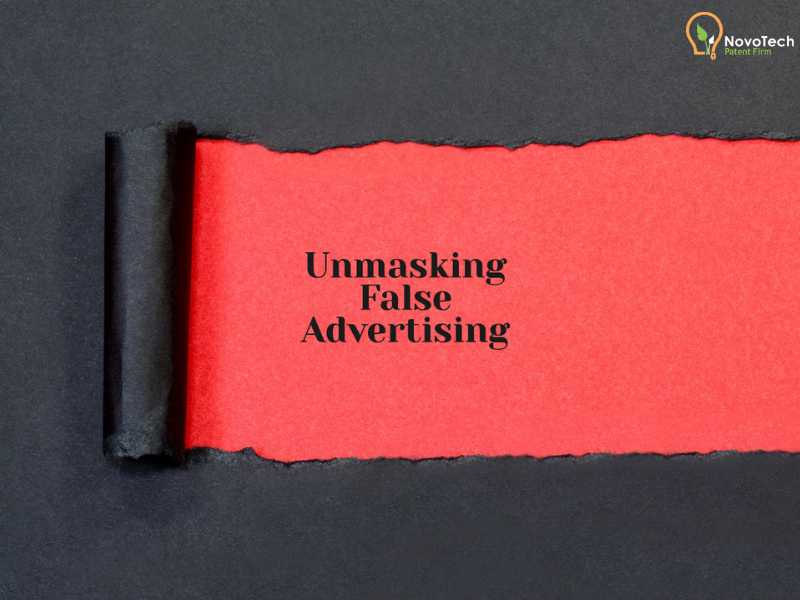
Misleading Patent Claims: Unmasking False Advertising
Authored by Babak Akhlaghi on October 16, 2024. In a notable clash within the footwear industry, Crocs initiated a lawsuit against Dawgs, accusing them of patent infringement. This legal case took an intriguing turn when Dawgs counterclaimed. They asserted Crocs engaged in false advertising. This alleged violation falls under Section 43(a) of the Lanham Act. Our previous edition discussed patent marking. This case now explores advertising accuracy issues. It examines the consequences of falsely marking a product as patented.
Background of the Legal Battle: Crocs vs. Dawgs
In 2006, Crocs sued Double Diamond Distribution, Ltd. and several other competitor shoe distributors for patent infringement. Although patent infringement was the initial focus, it is not the central issue in this case, which pivots on the false advertising allegations brought forth by Dawgs. See, Crocs, Inc. v. Effervescent, Inc., No. 2022-2160 (Fed. Cir., October 3, 2024)
Dawgs Strikes Back: False Advertising Allegations
The crux of the matter lies in Dawgs’ counterclaims against Crocs, accusing them of falsely promoting a material called “Croslite” as patented, proprietary, and exclusive. Dawgs argued that this marketing strategy misled consumers into believing Crocs’ footwear had unique qualities, thus casting competitors’ products as inferior. This, they claimed, amounted to false advertising violations under Section 43(a) of the Lanham Act, 15 U.S.C. § 1125(a).
Understanding Section 43(a) of the Lanham Act: Protecting Consumers from Misleading Branding
Section 43(a) of the Lanham Act is a pivotal piece of legislation aimed at preventing misleading practices in commerce. It makes it unlawful to use false or deceptive descriptions or representations in connection with goods or services. Specifically, it prohibits actions that could cause confusion about the origin, sponsorship, or endorsement of a product or service. It also addresses false advertising, where businesses might misrepresent the nature, characteristics, or qualities of their own or another’s products. Essentially, if a company misleads consumers through false branding or advertising, they can face legal action from those harmed or likely to be harmed by such deceitful practices.
Courtroom Drama: Initial Verdict and Reversal
Initially, the district court sided with Crocs, granting them summary judgment by ruling that Dawgs’ counterclaim lacked legal ground. Based on precedents set by the Supreme Court in Dastar and the Federal Circuit in Baden, the court determined that Crocs’ false claims about Croslite being “patented” were not actionable under Section 43(a)(1)(B). See, Dastar Corp. v. Twentieth Century Fox Film Corp., 539 U.S. 23 (2003) and Baden Sports, Inc. v. Molten USA, Inc., 556 F.3d 1300 (Fed. Cir. 2009).
These claims were likened to acts such as plagiarism or reverse passing off, which the Supreme Court in Dastar ruled are not covered by the Lanham Act’s false advertising prohibition. Similarly, the Supreme Court in Baden found inventorship claims non-actionable, thus dismissing Dawgs’ counterclaim.
A Tale of Two Verdicts: From District Court to Federal Circuit
However, the Federal Circuit disagreed with the district court. In Dastar, the Supreme Court delved into unfair competition under Section 43(a)(1)(A) of the Lanham Act, focusing on misrepresentations about the “origin, sponsorship, or approval” of goods. The case involved a World War II TV series, where Dastar bought the original series, modified it, and sold it as its own without crediting the original creators. The Court ruled that “origin” refers to the producer of tangible goods, not the creator of ideas within those goods, thus dismissing the Lanham Act claim. Similarly, Baden concluded that false advertising allegations arising from inventorship were non-actionable.
Despite differing contexts, Dastar and Baden provide valuable insights. Dastar warns that a mere false claim of original is a claim of authorship, not actionable under Section 43(a). The Supreme Court similarly held a mere false claim of inventorship is not actional under Section 43(a) as it does not go to the nature, characteristics, or qualities of the products. However, in this case, the Federal Circuit held that the false patent claim pertains directly to the product’s characteristics.
Turning the Tables: Dawgs’ Counterclaim Gets a Second Chance
Dawgs presented allegations and evidence showing that Crocs’ promotional statements misled consumers regarding the true nature, characteristics, or qualities of Crocs’ products. Both the district court and Crocs referenced Baden to argue that linking “patented” with a product characteristic would conflict with the Supreme Court’s decision in Dastar by reframing it as a false authorship or inventorship claim. The Federal Circuit disagreed, asserting that claiming a product is made of “patented” material is not merely about inventorship. Dawgs highlighted Crocs’ promotional claims that a patent covers Croslite, showcasing its tangible benefits across Crocs’ footwear.
Dawgs contended they have a valid cause of action because Crocs falsely claimed Croslite was patented to attribute specific characteristics to it. They alleged that Crocs’ statements about the closed-cell resin, labeled as “exclusive,” “proprietary,” and/or “patented,” led consumers to believe Crocs’ molded footwear is made from a unique material. Furthermore, Dawgs claimed Crocs’ promotional content deceives consumers into thinking all other molded footwear is inferior to Crocs’.
Conclusion: Broader Implications for the Industry
The Federal Circuit sided with Dawgs, agreeing that these allegations target the nature, characteristics, or qualities of Crocs’ shoes. The Court held that a cause of action arises under Section 43(a)(1)(B) when a party falsely claims a patent on a product feature and advertises it in a way that misleads consumers.
Takeaways
This case shows the importance of truthful advertising. Companies face legal risks for deceptive marketing. The footwear industry is watching closely. The outcome could affect future marketing strategies. It may also influence legal battles about advertising accuracy.
Stay Informed with Expert Insights!
Want more valuable tips on navigating patent law and protecting your intellectual property? Join our free weekly newsletter for the latest updates, expert advice, and exclusive content straight to your inbox. Subscribe today and never miss out on essential information that can make all the difference in your patent journey! Subscribe to our Newsletter